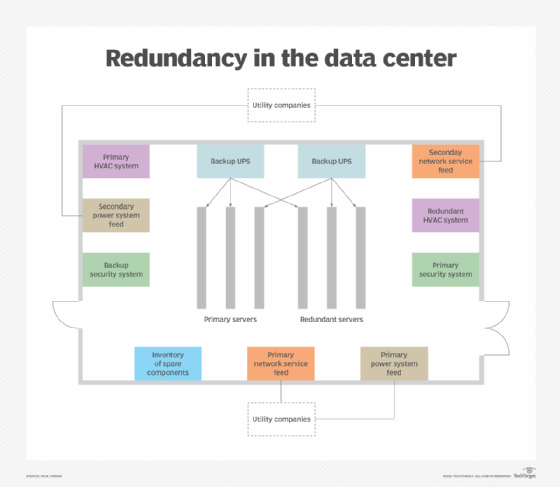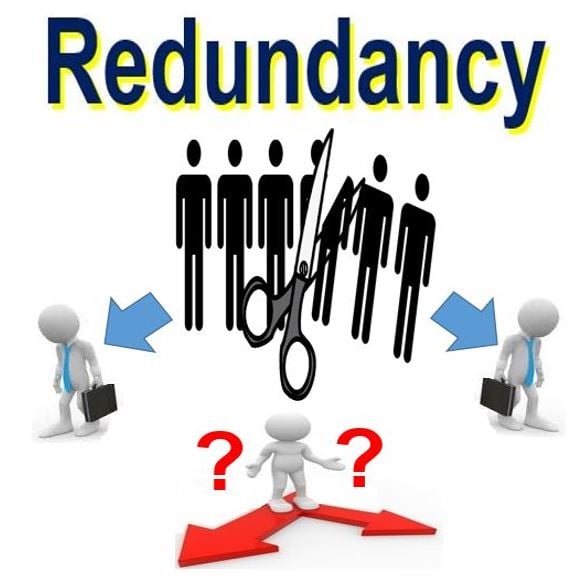Who Pays Redundancy Money? A Detailed Overview for Employers and Employees
Who Pays Redundancy Money? A Detailed Overview for Employers and Employees
Blog Article
Checking Out the Interaction Between Company Redundancy and Organizational Adaptability for Future Growth
In the dynamic landscape of today's organization globe, the complex relationship in between firm redundancy and organizational versatility arises as a vital factor for continual development and success. Firms typically encounter the challenge of striking a delicate balance between maintaining a level of redundancy to alleviate dangers and cultivating versatility to react promptly to the ever-evolving market demands.
Value of Business Redundancy
Business redundancy is a vital component that enhances business strength and reduces operational risks. By including redundancy actions within the business framework, companies can much better stand up to unexpected interruptions and variations in business environment. Redundancy works as a calculated barrier, allowing business to adjust and respond successfully to unforeseen obstacles without compromising essential operations.
One trick facet of the importance of business redundancy is its duty in making certain connection throughout times of situation. When confronted with abrupt modifications or emergencies, repetitive systems, sources, or employees can action in to keep crucial features and avoid widespread disturbances. This continuity not only safeguards the company's credibility and client count on but additionally minimizes monetary losses and functional downtime.

Strategies for Organizational Adaptability

An additional important technique is purchasing innovation and framework that can sustain adaptability and scalability. Carrying out digital devices, automation, and information analytics can simplify procedures, enhance performance, and give important insights for informed decision-making. In addition, creating adaptable organizational structures that enable fast modifications to market characteristics and client requirements is crucial for staying affordable in a quickly evolving atmosphere. By proactively identifying potential disruptions and possibilities, organizations can proactively adjust and thrive in an ever-changing company landscape.
Harmonizing Redundancy and Versatility
Accomplishing an unified equilibrium in between functional redundancy and organizational flexibility is paramount in browsing the complexities of a vibrant service atmosphere. Redundancy within a firm provides a safeguard, making sure connection and stability in operations. However, an extra of redundancy can result in inadequacies and prevent versatility to transforming market conditions. On the various other hand, organizational adaptability allows companies to respond quickly to outside disruptions and confiscate brand-new possibilities. Striking the appropriate balance between redundancy and versatility is a fragile process that calls for a deep understanding of the organization's objectives, industry characteristics, and risk tolerance.
To accomplish this balance, firms need to conduct normal evaluations of their procedures to recognize areas where redundancy is needed for danger mitigation and where adaptability can drive development and development. Executing flexible frameworks, cultivating a culture of constant understanding and renovation, and encouraging open communication throughout all degrees of the organization are vital strategies to harmonize redundancy and adaptability properly. By aligning these 2 critical components, firms can place themselves for sustainable growth and success in an ever-changing company landscape.
Study on Adaptation Success
In analyzing instances of our website successful organizational adjustment, it comes to be obvious that the interplay between operational redundancy and flexibility is a specifying aspect in shaping durable companies. One compelling case research study is that of Netflix. At first a DVD rental service, Netflix demonstrated amazing versatility by transitioning into a streaming system when digitalization interrupted the industry. By strategically buying modern technology and web content production, Netflix not only survived but prospered in a rapidly evolving market. An additional standout instance is Amazon. Starting as an on-line book shop, Amazon constantly adapted its organization design, expanding right into varied markets such as cloud computer and man-made intelligence. This versatility enabled Amazon to stay in advance of rivals and meet altering customer demands. Lastly, Adobe provides a noteworthy image why not try this out of effective adaptation. The business changed from offering software licenses to a subscription-based design, guaranteeing persisting revenue streams and improved client interaction. These study highlight the importance of functional redundancy coupled with organizational versatility in fostering lasting development and competition.
Building Durability for Future Growth
Structure durability for future growth requires a tactical placement of operational procedures with market dynamics and arising trends. Companies should adapt to transforming settings by fostering a culture of adaptability, innovation, and continuous improvement. Durability involves not just getting better from setbacks but additionally proactively getting ready for future challenges. One essential element of structure strength is purchasing robust risk administration techniques to minimize possible interruptions. This consists of scenario planning, diversifying supply chains, and developing contingency prepare for different contingencies (who pays redundancy money).
Furthermore, fostering solid relationships with stakeholders, such as consumers, staff members, suppliers, and the neighborhood, is necessary for weathering unpredictabilities and preserving count on and support during stormy times. Effective interaction and transparency play a vital duty in structure strength, as they assist line up expectations and assist in cooperation in navigating uncertainties.
Additionally, organizations require to prioritize learning and growth campaigns to upskill workers and outfit them with the necessary tools to adapt to changing circumstances. By buying their labor force, firms can enhance their adaptability and agility, eventually enhancing their strength for sustainable future development.
Verdict

In the dynamic landscape of today's organization world, the elaborate partnership in between company redundancy and business flexibility arises as an important aspect for sustained growth and success. Firms frequently encounter the obstacle of striking a fragile equilibrium between maintaining a level of redundancy to minimize risks and promoting flexibility to react promptly to the ever-evolving market needs.To achieve this balance, companies require to perform routine assessments of their procedures to determine locations where redundancy is needed for threat reduction and where versatility can drive innovation and growth.In final thought, the interaction between business redundancy and business versatility is important for future growth. Building strength through a mix of redundancy and flexibility will certainly guarantee that firms are prepared for the difficulties of the future.
Report this page